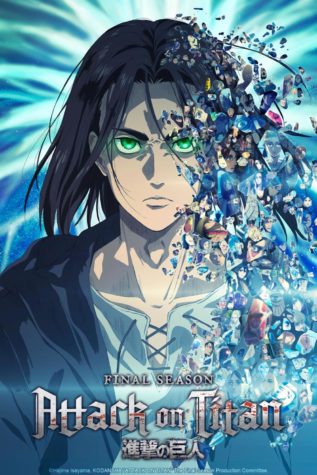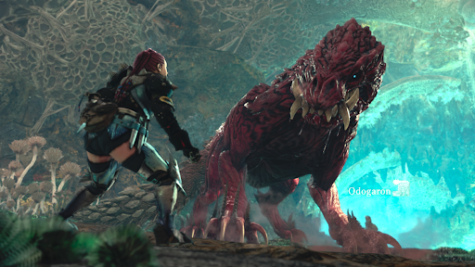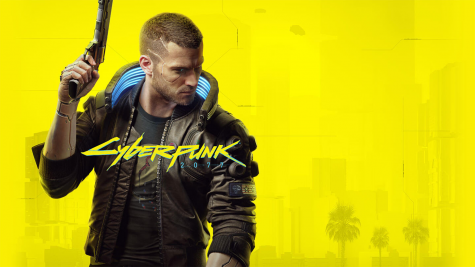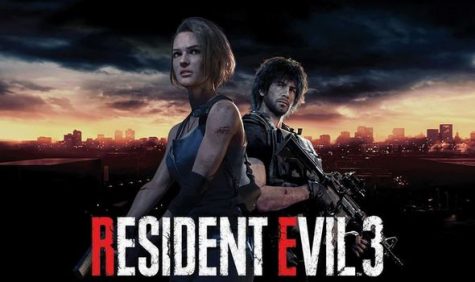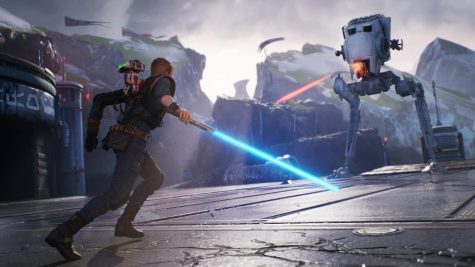Pokémon: Legends Arceus, One Giant Leap for ‘Monkind

Kleavor, the first Noble Pokémon players must calm from its frenzy.
May 11, 2022
“Pokémon Legends: Arceus,” which launched worldwide on 28 January this year, is the newest game in the Pokémon series to be released, and there’s been quite a lot of talk about it. Being the most different main line game in about 26 years, there are many (including myself) who enjoy the numerous changes to gameplay and see it as a major step forward for the series. On the other hand, there are those who aren’t as enamored with the title due to issues of quality and a sense of being rushed.
The most notable differences between Legends and everything that came before it are undoubtedly the myriad changes to gameplay that this game introduced, most notably the semi-open world of the Hisui region, where the game takes place. In place of the usual route-city map structure found in most Pokémon games, Legends divides the map into sections that act as their own smaller open worlds with great freedom of movement, each accessible via the Jubilife Village, which acts as the hub world. As you complete story quests, new areas unlock for you to freely explore and catch new Pokémon in your mission to complete the world’s first Pokédex. The mechanics of catching Pokémon have also changed significantly. In a style which likely takes inspiration from the mobile game Pokémon GO, players are able to capture the magical creatures in the overworld or distract them by throwing food and items at them and hoping they don’t run away. However, the Pokémon may instead become aggressive towards the player and try to attack them directly, in which case they will have to either battle or run far enough away from the Pokémon’s line of sight. Battling is mostly unchanged, aside from the streamlining of menus and the new Agile and Strong styles of moves, which offer more frequent attacks with less power and less frequent attacks with more power respectively. The completion of the Pokédex, the comprehensive Pokémon encyclopedia, is a much more involved task this time around and isn’t just “catch the ‘mon once and a job well done.” Each Pokédex entry has numerous research tasks to complete for each Pokémon which range from catching so many of a species to watching it use a move a certain number of times, a completionist’s dream come true.
Without spoiling too much of the story (everyone should experience this game themselves), I will say that Legends doesn’t have the most complex or compelling narrative. It is, after all, a Pokémon game. The story starts with the player character being sent more than a century into the past by the creator of the Pokémon universe, Arceus, falling out of a space-time rift in the sky, and landing in the region of Hisui, an older version of the Sinnoh region from Diamond, Pearl, and Platinum. It is here that the player meets and begins working with the Galaxy Expedition Team, an organization dedicated to researching and settling the vast Hisui region and the precursor to Team Galactic, operating out of the recently settled Jubilife Village (likely becoming the Jubilife City featured in the Sinnoh games). The story progresses as the player completes the main missions, which involve quelling rampaging Noble Pokémon and gaining the aid of revered mount Pokémon, which act in a similar way to Ride Pokémon in Sun, Moon, Ultra Sun, and Ultra Moon. These creatures aid the player in traversing the vast, untamed wilds of the Hisui region. Aside from these changes, the storyline is quite simple and linear and follows the standard “save the world from the Big Bad” plot found in many Pokémon games. There was, however, one section near the end of the plot which caught me off guard with a drastic tone shift. Since this is a Pokémon game, it wasn’t dark or grim in any sense, but it was a nice change of pace that I welcome more of in future games.
Unfortunately but expectedly, “Pokémon Legends: Arceus” is not a perfect game by any meaning of the word, and there are some aspects of the game which are worthy of some complaint. The first and most common of which being the quality of the graphics. In my opinion, it’s not as big of a deal as many make it out to be, but it does strike me as odd that in 2022, the company with the largest media franchise in history would release a game with textures comparable to a PS2 title when there are Switch games with stunning graphics like “Breath of the Wild” and “Xenoblade Chronicles.” Another common gripe with the game has to do with a feeling of emptiness in the story and world. As mentioned earlier, Legends’ plot is quite simple and straightforward, even for a Pokémon game, which many take issue with. This also applies to the game’s world which, aside from the village and a few small settlements, is devoid of human civilization. Personally, I disagree with that because the Hisui region is supposed to be a vast space where Pokémon roam wild. If the region was more populated, that would strip away some of the awe you get by seeing such a wide landscape populated solely by Pokémon. Despite these criticisms, the rest of the game is very enjoyable.
“Pokémon Legends: Arceus” is a step in the right direction for the Pokémon company, and with Pokémon Scarlet and Violet releasing later this year and seemingly taking some inspiration from Legends, it’s exciting to wonder what new developments are in store for this series. If you want to buy a copy for yourself, the game is available at Game Stop, Best Buy, and department stores or you can purchase a digital copy on the Nintendo Switch eShop or Nintendo’s website. Now if you’ll excuse me, I have a Pokédex to complete.



